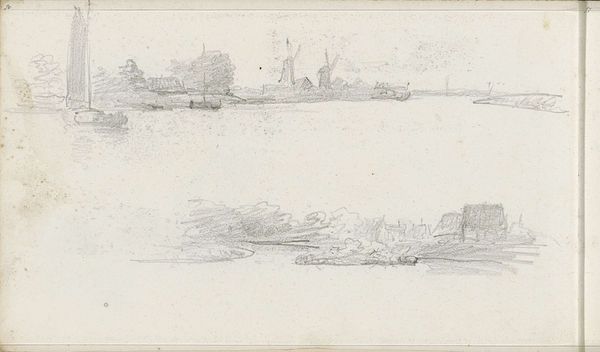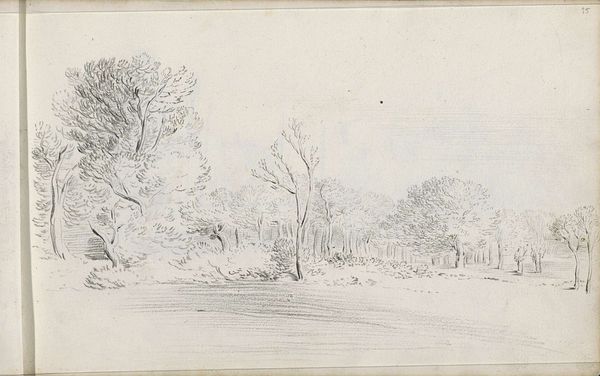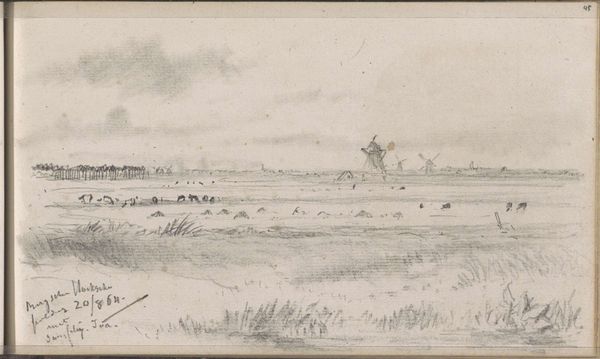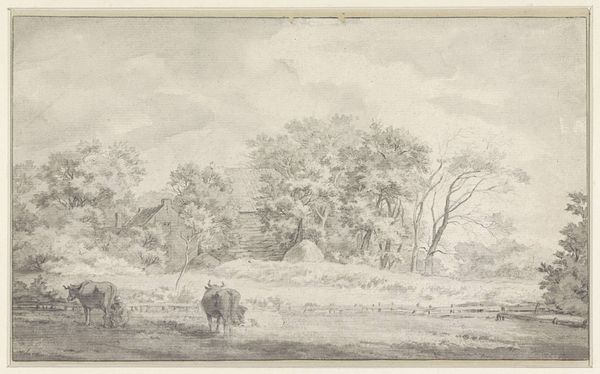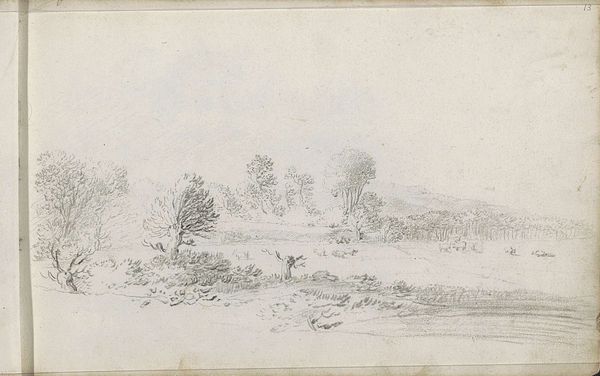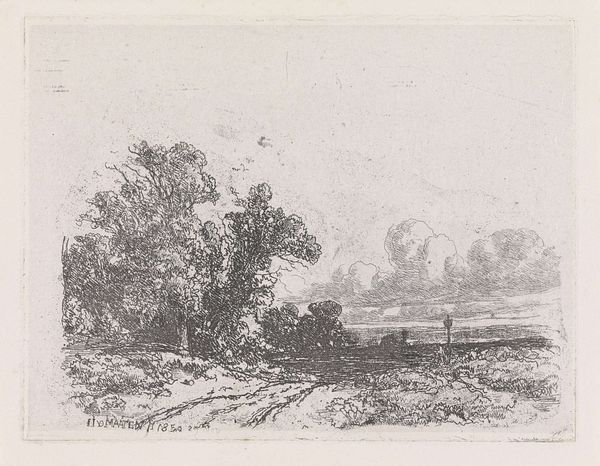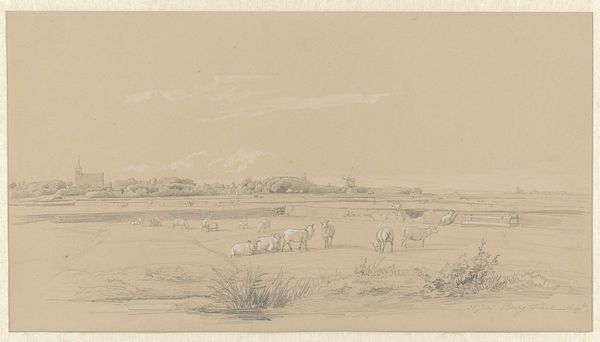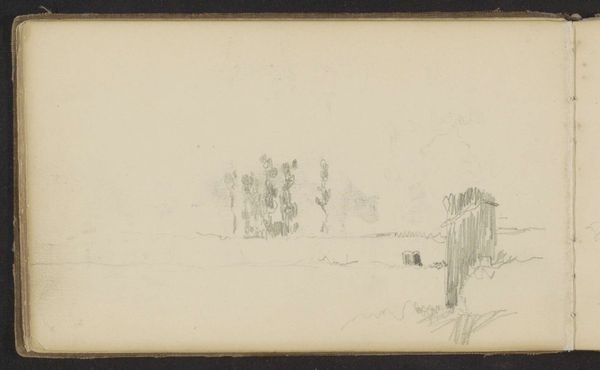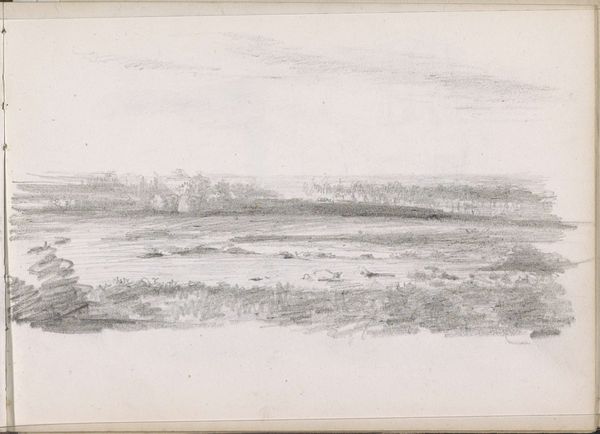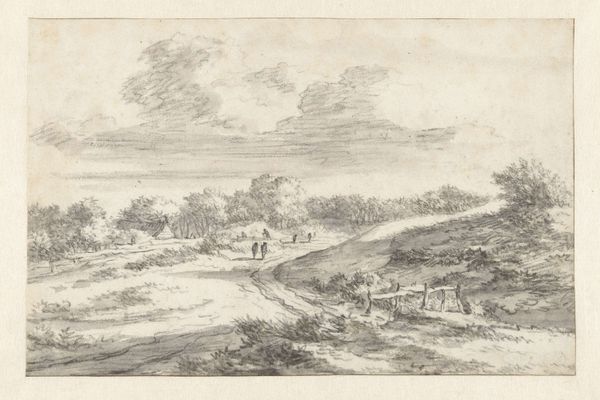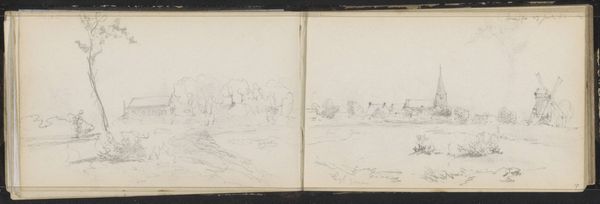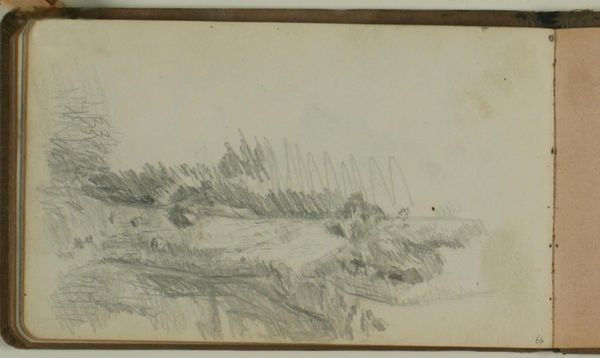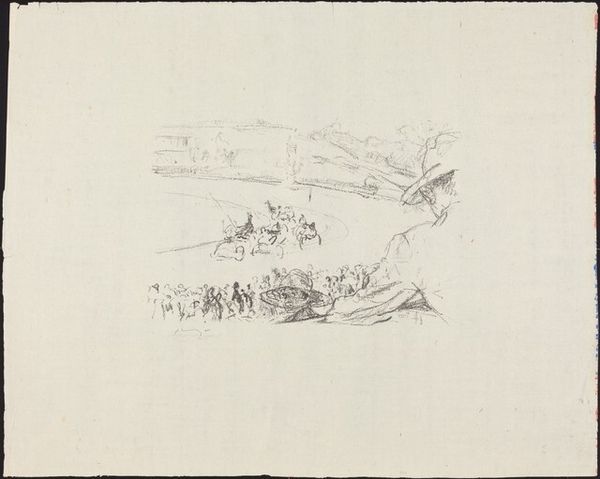
drawing, pencil
#
pencil drawn
#
drawing
#
landscape
#
etching
#
pencil
#
realism
Dimensions: height 142 mm, width 218 mm
Copyright: Rijks Museum: Open Domain
Willem Cornelis Rip created this landscape with a mill using graphite on paper in the late 19th or early 20th century in the Netherlands. Rip was associated with the Hague School, a group of Dutch artists working between 1860 and 1890. This seemingly simple sketch holds broader social and cultural significance. In the late 19th century, the Netherlands, like much of Europe, was undergoing rapid industrialization. Artists of the Hague School, however, often turned to the countryside for their subject matter. Their paintings became a conscious effort to preserve a sense of national identity rooted in rural life. Mills, like the one depicted here, were not merely functional structures; they were symbols of Dutch ingenuity and resilience, standing as proud monuments in the landscape. Art historians use various resources, including exhibition reviews, artists' letters, and economic data, to understand the complex interplay between art and society. In this way, we recognize that art is never made in a vacuum but is always a product of its time.
Comments
No comments
Be the first to comment and join the conversation on the ultimate creative platform.
